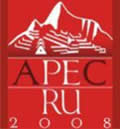United Kingdom
| Welcome |
| Peru in Brief |
| History |
| Geography |
| Government & Politics |
| Maritime delimitation between Peru and Chile |
| News |
Links |
TRADE AND INVESTMENT OFFICE
|
||
Peru has experienced strong economic growth in the last decade and through this period its economic links to the UK have been manifest. There are good indicators that his trend will continue. Currently, the economy is growing at more than 7% of GDP, which is significant, considering that it is a year in which the fishing industry has suffered. But losses in fisheries have been boosted by strong performances in the agro industry and textile sectors, the last of which has shown a 30% increase. Export growth has also been very impressive reaching more than US$23 billion in 2006 with an increase in 23% in 2007. This has been the result not only of an increase in the value of traditional commodities but also of good positioning of non-traditional exports. Peru's fiscal and monetary policies are sound. Peru has been able to balance its fiscal accounts, recording a 1.9% surplus in 2006. The Central Reserve Bank actively pursues low inflation targets of between 1.5% and 3.5% per year and tries to reduce dollarization, which declined to 60% in 2006. Furthermore, Peru has a very secure financial system, with delinquency having reached a historical low. The government is actively trying to increase the welfare of the population. Employment has increase in the coastal regions due to new government investments in infrastructure. Government funds have also been directed towards low income families in the highlands through the 'Sierra exportadora' initiative. There is also the 'canon minero', revenues derived from mining operations and half of these taxes are now being sent directly to the regions for investment. |
||
Direct Foreign Investment in Peru has grown steadily since the 1990s and reached almost £8 billion by the end of 2006. Of that figure, the UK has contributed roughly £1.3 billion, which is quite significant considering that, together with Spanish investments, it represents almost half of the total foreign investment that has been directed towards Peru. The UK itself has been a major participant in helping spur investment in the mining sector, through major enterprises such as those of Rio Tinto, BHP Billiton, Monterrico Metals, Trading Emissions Plc, among several others, but the UK has also ventured into several other important sectors. Most recently, HSBC Bank has entered the Peruvian finance market in 2006 and, in infrastructure, that same year saw a consortium of companies which includes P&O Dover win the bid for the construction -and a 30 year concession- of the New Container Terminal in Peru's most important port, Callao. This will be a major investment of over £300 million that will substantially improve Peru's maritime infrastructre capacity. It is important to note the recent entry of the Peruvian Hochschild, one of the biggest silver mining companies in the world, into de London Stock Exchange -FTSE 250- in the year 2006. Hochschild has raised a $500 million credit to expand its operations in Peru. Most importantly, it is the first Latin American business to achieve this feat in over a hundred years and denotes the growing strength of Peruvian industries. |
||
| Peruvian exports enter duty free to the British market, thanks to the European Union General System of Preferences SGP+.. | ||
The Trade & Investment office is responsible for: |
||
|
||






